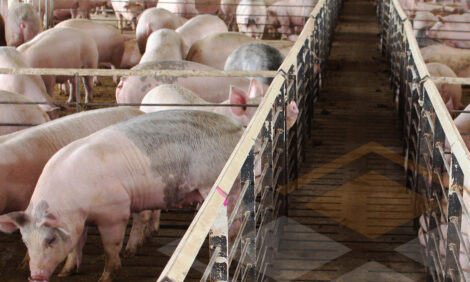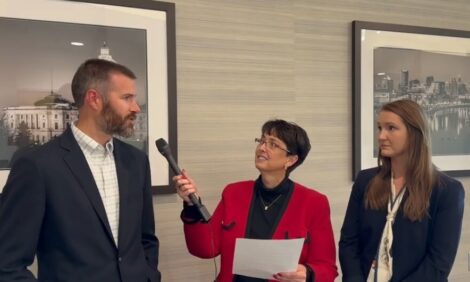



Seasonality in Pigs
A summary of the findings to date from a research project carried out by the Faculty of Biological Sciences at the University of Leeds, published by BPEX in its series, Research into Action, number 10.The research involved analysing a large data set as well as the weather, topography and staffing parameters to see what has an effect on production over summer and autumn.
For outdoor sows in the UK, several days of warm weather (average daily temperature above 18°C) during lactation and around weaning results in reduced and more variable farrowing rates in comparison to when temperatures are below 18°C.

Sow heat production increases as lactation progresses in line with increasing milk production; hence heat production, and so susceptibility to developing heat stress, is greatest just before weaning.
If environmental temperatures are warm then the sow may reduce her feed intake such that it fails to meet the metabolic demands of lactation; she will then mobilise her own body reserves to meet the ongoing requirements of lactation resulting in reduced body condition and possible adverse effects on developing ovarian follicles. Nutritional deficits are associated with reduced luteinising hormone (LH) production, resulting in delayed returns to oestrus and reduced conception and farrowing rates.
In this study, gilts were found to be the least affected by warmer temperatures, probably because they do not have the increased metabolic demand of lactation prior to service.
In order to cool down in warmer weather, sows redirect their blood flow to their skin and mammary tissues, away from the ovaries. The quality of their eggs and the readiness of their uterus for pregnancy may therefore be negatively affected.
The findings from this research suggest that cooling facilities should be provided to outdoor sows in the UK when daily average temperature rises above 18°C.
Management Guidelines
- Monitor sow feed intake in warm weather. If sows are not eating, take steps to cool them down or provide more energy-dense feed
- Provide wallows early on in the year as well as throughout summer, or sprinklers for sows to cool down in. In individual paddocks you could create a spray of water from the sow drinkers, providing an area of mud in which the sow can stand or wallow
- Paint farrowing arcs white to reflect sunlight and reduce the temperature inside; painting huts white can reduce internal arc temperatures by around 7°C
- Use insulated arcs, fully insulated where possible; combining this with painting arcs white will have an additive temperature reducing effect
- Use an adjustable ventilation opening at the rear and re-align arcs to assist with air flow
- Feed sows twice a day if not on an ad-lib system.

August 2011






